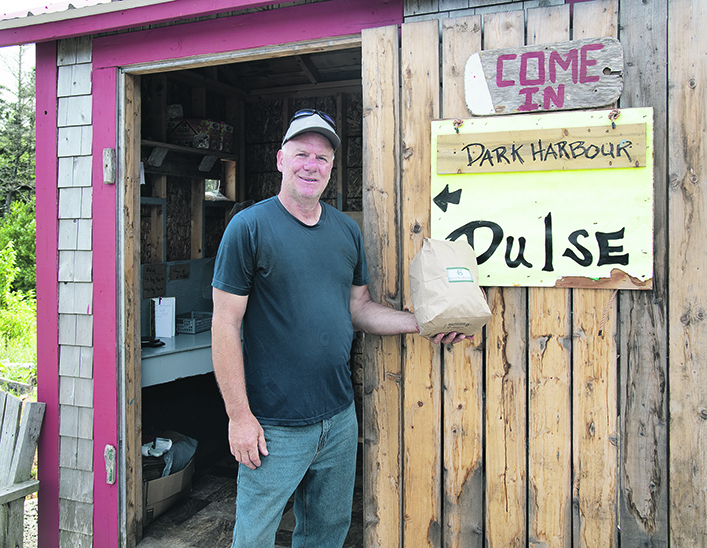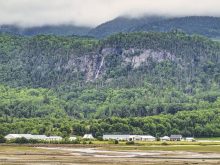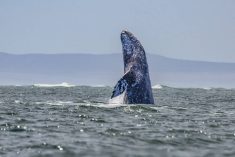Grand Manan Island sits at the western end of the Bay of Fundy in New Brunswick.
Ninety minutes away from the mainland by ferry, the island has long depended on the sea with fishing and aquaculture the economic mainstays.
Tourism is also important as visitors come for the dramatic scenery, picture-perfect lighthouses and fishing villages, wildlife including whales and rare birds, and a relaxed lifestyle.
Read Also

Vintage power on display at Saskatchewan tractor pull
At the Ag in Motion farm show held earlier this year near Langham, Sask., a vintage tractor pull event drew pretty significant crowds of show goers, who were mostly farmers.
Fish and lobster are big, but the sea product that intrigued us most was a surprise.
Dulse harvested in Grand Manan is considered the world’s best. This reddish-purple seaweed grows on rock surfaces in cold ocean waters and is picked by hand at low tide. Used for centuries, it is high in protein and fibre and loaded with other nutrients.

The reason why it’s best here is that the high cliffs lining the entire west coast of the 24-kilometre-long island provide optimal shade so the exposed dulse is not sun damaged. Too much sun can “cook” the dulse, adversely affecting its quality.
To get a taste of “dulsing,” we drove across the island to its only west shore community at Dark Harbour, consisting of a few houses. Here we met two of the island’s experienced harvesters — Vince Antworth and Kyle Mawer. Both are lobster fishermen but harvest dulse during the summer off-season.
They use a 16-foot dory, a flat-bottomed boat with a long tradition in the Atlantic fishery. But this one has special adaptations. The entire bottom is coated with Kevlar, which eases its path to the water as they push it down the boulder-strewn beach and manoeuvre it through the rocky shallows where dulse grows.
They offered to take us out so we climbed into the dory in thick fog, which didn’t matter since we weren’t going far. A few minutes later they pulled the boat onto the edge of the rocks.

Wearing rubber boots, they expertly negotiated the slippery rocks and shallow water while holding large plastic baskets. Not all of the seaweed on the rocks is dulse, so they have to be selective.
They pulled off handfuls of the slimy dulse in just a few minutes. Fronds usually range from about eight to 16 inches long. There’s no danger of damaging the dulse because its strong roots easily grow back.
On the ride back to shore, Kyle emptied seawater from his rubber boots. Why not wear hip waders, we asked. He explained that the grip on hip waders is not as firm on wet rocks and it’s easy to slip and turn an ankle or worse. So he opts for better grip and just empties his boots more often.
From Dark Harbour, it’s a short drive to Green Sea Harvest to dry and then sell the dulse.
Wayne Green runs the operation, which comprises a huge flat area of stones laid on the ground and covered in netting. Here dulse harvesters spread the seaweed to dry after running it through a shaker, which untangles it.

In ideal conditions it will dry in a day, losing about 80 per cent of its moisture content.
After Kyle and Vince spread their dulse, they said they’d be back in about four hours to turn it. Turning is a slick operation, in which they roll a wooden pole over the dulse. Since it sticks to the pole, they just turn it around and unroll it so that the other side is exposed to the sun.
Rain can be a problem. If the dulse doesn’t dry properly, it might still be usable but won’t get top dollar. Good quality dulse earns the harvesters about $15 per pound when dry.
Wayne Green pointed out that the business hasn’t changed much over the years.
“Other than using motors on the boat and the shaker, it’s the same way dulse was harvested 100 years ago.”
Dry dulse is crunchy, though a bit chewy at the same time. It is only mildly salty if dried properly with a subtle smoky flavor.
We were amazed at how popular it is here as a snack. Kyle said that he always has a “dash stash” for easy snacking — a paper bag of dulse on his truck dashboard.
Dulse is also ground up and used for food supplements and in salads, soups, casseroles and other dishes.
While Dark Harbour Dulse is shipped everywhere, people can also buy it directly from Green. He keeps bags of it in a small shelter on site.
When he isn’t around, you can simply help yourself to a bag ($20 for a big bag, $10 for a small bag) and leave the money. He even leaves a box with money in it in case you need change — another way of doing business that probably hasn’t changed in 100 years.
Arlene and Robin Karpan are well-travelled writers based in Saskatoon. Contact: travel@producer.com.


















